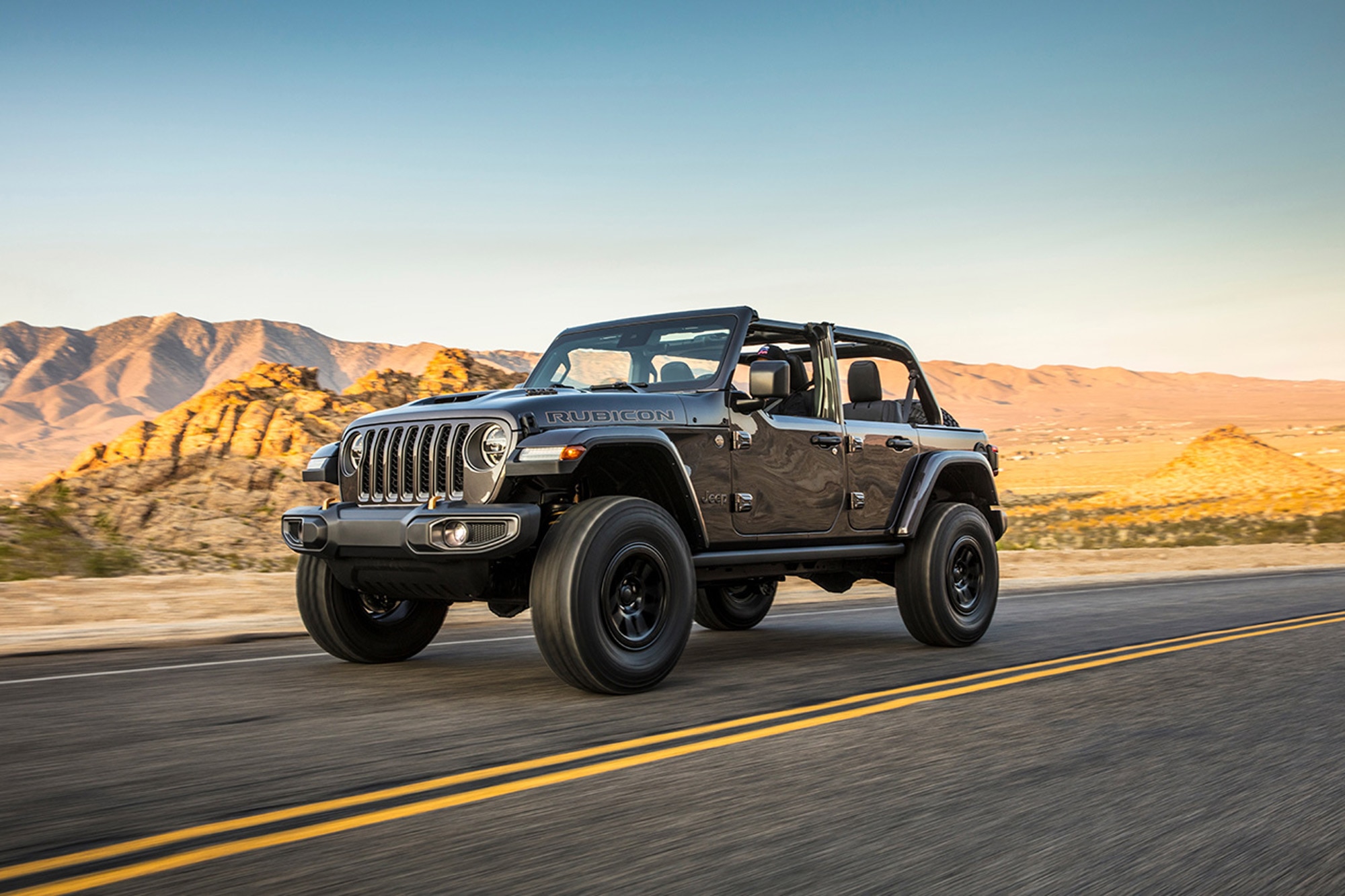The Pros and Cons of Hard-Top Convertibles
These solid-roof models mimic traditional coupes with an open-air twist.
 Mazda
Mazda
Hard-top convertibles enjoyed a brief moment in the sun starting at the end of the 1990s and lasting until the end of the 2010s. With their blend of coupe-like looks and security, alongside the open-air fun of a traditional softtop, many brands quickly latched on to the advantages these folding roof designs offered.
However, convertibles are now available in just a handful of current vehicles, especially for retractable designs. If you're thinking of picking up one of these rigid-roofed rides for yourself, here are a few pros and cons of hard-top convertibles to consider.
What Is a Hard-Top Convertible?
A hard-top convertible is, strictly speaking, any vehicle that features a rigid roof that can be retracted or otherwise removed to enjoy open-air motoring. There are two primary types of hard tops that you'll find among both used and new vehicles.
The first is the retractable hard top, which automatically folds metal or composite roof panels into a storage space behind the cabin — or, occasionally, in the trunk — at the touch of a button. In this way, they mimic traditional soft-top convertibles that use a fabric top instead.
The second type of hard-top convertible is a vehicle with a roof that must be lifted entirely from the car. Rather than retracting for storage, these tops are held on by clips that must be buckled and unbuckled. This type of design was popular on old-school SUVs such as the original Chevrolet Blazer and Ford Bronco and continues to be an option in a handful of modern off-roaders, such as the Jeep Wrangler.
Pros of a Hard-Top Convertible
There are several advantages that a hard-top convertible has over one with a soft top. Since the roof is often made of the same materials as a standard coupe, it's much better at resisting weather than a fabric design.
This protection makes many hard-top convertibles a solid choice for buyers who want to avoid the sun and heat driving during warmer months and not worry about the effects of snow, ice, or colder inclement weather. At the same time, hard tops are better at insulating against not just the great outdoors but also sound, reducing the amount of road noise that enters the cabin.
Hard-top convertibles are much more secure than their soft-top counterparts, which are an easy target for thieves. Cutting into a fabric roof with a knife offers instant access to a convertible's cabin, and the costs associated with a major top repair can be high.
That security also applies while driving, where a solid metal or composite roof provides much better protection in the event of a collision than a soft top.
Finally, some hard-top convertibles mimic features found in fixed-roof vehicles that soft-top models can't match. These include built-in sunroofs or full glass panels above the passenger compartment.
 Jeep
Jeep
Cons of a Hard-Top Convertible
Retractable hard-top convertibles almost always suffer a weight penalty versus their soft-top cousins. The extra mass is due not just to the roof panels themselves but also to the more complicated and robust mechanisms required to support the top while it is being folded out of sight.
This extra mass can reduce overall fuel mileage and performance. In addition to being heavier and more complicated, a retractable hard top's mechanical details are also more expensive to repair, in general, if something fails during the course of ownership.
Consider that while a soft top is relatively easy to compress into a smaller space, a retractable hard top requires much more room to store. The additional hardware means most folding hard-top convertibles have seriously compromised trunks when the roof is folded, which can limit the amount of luggage that comes along for the ride on a weekend trip.
Removable hard-top designs come with their own set of complications. Once the tops are lifted off the vehicle, most models require you to store the roof somewhere safe. Not only does this take up space in your garage or driveway, but it also means that should you run into any bad weather, you'll likely have to head back home.
Larger vehicles featuring lift-off tops can sometimes require more than one person to remove them safely due to their size and weight. If you live alone, this can make it more challenging to enjoy open-top driving spontaneously.
These issues, combined with the additional cost required to manufacture, are some of the reasons the number of new hard-top convertibles has been reduced in the market.
Popular Hard-Top Convertible Vehicles
Although lift-off tops had been around since the early days of the automobile, the first power retractable hard top to hit mass production was the Ford Fairlane 500 Skyliner, which was sold for the 1957 to '59 model years and was considerably more popular than the low-volume Playboy retractable convertibles that debuted a decade earlier.
Until the retractable hard-top convertible resurgence in the 1990s, few manufacturers followed in Ford or Playboy's footsteps. While lift-off hard tops became popular on SUVs in the late 1960s, the 1996 Mercedes-Benz SLK-Class roadster reignited the retractable hard-top market. Other manufacturers, such as BMW, Chrysler, Infiniti, and Volvo, also jumped on the trend.
Jeep and Ford offer lift-off hard-top options for their respective Wrangler, Gladiator, and Bronco SUVs today. However, the list of retractable hard-top convertibles has shrunk to the Mazda MX-5 Miata RF, the Chevrolet Corvette, and several Ferrari and McLaren supercar models.
Written by humans.
Edited by humans.
 Benjamin Hunting
Benjamin HuntingBenjamin Hunting is a writer and podcast host who contributes to a number of newspapers, automotive magazines, and online publications. More than a decade into his career, he enjoys keeping the shiny side up during track days and always has one too many classic vehicle projects partially disassembled in his garage at any given time. Remember, if it's not leaking, it's probably empty.
Related articles
View more related articles